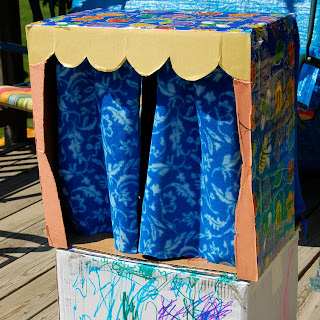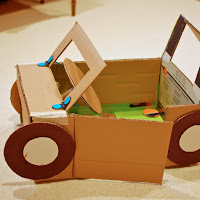MY FIRST CRAFT SHOW!
This past year has been a tough one on all of us, my family included. Knowing that I would simply stress out if I did'nt find an outlet, I turned to making hand crafts. In doing so, I quickly realized how satisfying working and creating with your hands really is. Before I knew it, I’d created enough stuff to sell at a craft show.
My mom and her friend Irene have been doing craft shows together for over 15 years. In the past I’ve often helped them with the larger shows; even making a few things here and there to sell.



I want to share with you my adventurous story about going from simply contributing to a craft show, to running my own booth. The timeline starts at 8 o’clock Friday morning and will end on 6 o’clock Sunday morning. I hope you enjoy reading this as much as I enjoyed experiencing it!

All year I’ve been steady contributing more and more to mom’s craft booth, gradually needing my own space. Since we got settled in after being over the road truckers for 6 years, I’ve been trying to do more to help mom wherever and whenever I can. A lot of my help has been with the set up and breaking down of her craft booth. So knowing from past experience, craft shows are a lot of work and can tire out even the most energetic crafter. There’s quite a few things involved with doing one. First is planning, the next is presentation, the last is preparation., the three “P’s”.
A month before the craft show, I started working on all seasonal related items, (this time being Christmas/Winter). I worked on my crafts whenever the opportunity arose, gradually getting some things marked off my list, with the final item being crossed off at 4:30 a.m. Saturday morning. Not only did I make over $700 worth of products, I made gluten free cookies and peppermint fudge, printed out all types of signs and tags, and packed up everything I knew I would need (with the exception of the kitchen sink).
 


On the day before the show, the heat was on so to speak. Knowing that I probably would not get any sleep, I took as many breaks as possible to keep rested and spend time with my family. Originally, we were all going to go so I could have a little help with set up and get a chance to wander around and look at all of the other wonderful hand crafts. But as they say, “Man makes plans, God laughs”. Anyway, when I wasn’t taking breaks, I was busy completing everything that was left on my list.
Finally at 4:30 Saturday morning, I marked the final item off the list. I went and stretched out for a quick 30 minute rest (setting the alarm just in case). I arose, splashed water on my face and got ready for the day. Shortly afterward, my little man decided to wake up and I had to put him back to sleep. As I was finalizing the last details and packing, the little guy woke up again. Fortunately my step-son and his family were spending the night and my daughter in law graciously offered to watch him for the day so I didn’t have to worry about him being under foot at the show and that someone would take care of him for me.


I was getting about a later start than I wanted but figured it would all work out eventually. I hit the drive through for breakfast and stopped to visit my hubby at his workplace. Not a whole lot to note about the hour plus drive except for the beautiful sunrise, drinking coffee from the wrong side of the cup and pouring some of it on my clean shirt and the idiot driver that thought he could pass more than one vehicle in a short passing zone with a blind hill. Good thing I keep a safe distance between vehicles when I drive, or the poor guy would have actually hit the oncoming car.
Anyway, I made it to the craft show about 15 minutes later than expected. Hoping that mom would be there early to help me set up, I went inside in search of someone that could help me. Mom and her friend were still enjoying their morning off since they had the luxury of showing up the night before to set up. I found the office, explained who I was and what I was needing. There was some discussion what to do about the tent and having enough room, and unfortunately for me, I started to set up in the incorrect area. The person in charge of the show explained that the space meant for my tent was on the sidewalk up against the building; not on the grass. The grass was apparently something special since the center had spent money to have it put in and there was a fence surrounding it at one time. I have to admit that during this part of the conversation I did glance down at the grass and wondered to myself what was so special about crab grass!
 


After I was assisted in my move to the spot I was suppose to use, I was almost an hour behind! The set up was going to be completely different than I’d planned and I felt as though I didn’t have a clue about what to do! Thankfully mom finally showed up! She told me that one of the other craft vendors had come and told her what had happened to me and she quickly came to my rescue.
I missed most of the first part of the opening but eventually everything settled down and I was able to enjoy myself. It’s nice to have others say such positive and nice things about things you create. It’s quite an honor for them to purchase them as well. I handed out over 20 business cards and I hope that maybe I’ve gotten some new followers and possibly some new orders!
 


Being in such close proximity to the loading area, I was unable to pack my items until and hour after it was over. However, I did make about $20 more by waiting until the area had cleared out. I ended the day with making $138 and most likely could have made even more if I had someway to plug in my lighted, hand made grape vine & cedar wreaths and baskets.
I only had the chance to do a couple of quick rounds to see what everyone else had made and brought and I took several pictures for reference. One older gentleman made tractors our of old sewing machines (see picture below), while another lady that was close to mom’s booth made snow man hat bird houses out of metal cans (see picture below), tin can snowmen (see picture below) and humming bird feeders with a glass bottle (see picture below).
 




 
At 5pm, I was finally all packed up and ready to go. About 30 minutes into my trip, I had to call mom so she could help me stay awake. I normally have to do this for her since it’s rare that I can go to one that’s over an hour away. I couldn’t even begin to tell you what we talked about but I do remember referencing to one of the towns I’d just passed through as another town that was nowhere near my route. After much laughs and benign conversation, I made it back to my hubby’s work where I practically poured out of my ride.
After a quick visit and a little walking around to wake up, I switched vehicles and left out to pick up take out and make it to the house before the little guy thought I’d never come home. I spent some of my profits on the take out and child care, but it was totally worth it since I didn’t have to worry about my son and we ate on that chicken dinner 4 times before it was all gone! Luckily when I got home everyone was asleep with the exception on my daughter in law. I took a long a luxurious shower and dined on take out chicken. I finally passed out minutes after the kids went home, which was around 9pm. after being up over 36 hours, I just couldn’t stay awake any longer!
I woke Sunday at 6 am feeling like someone had run me over. The thought of getting out of bed and putting clothes on physically hurt me. I toughed it out and got my lazy, sore behind out of bed. I don’t recall much about Sunday other than feeling like I was running around in a mind fog, like I had taken too much cold medicine. It took all week, but I finally feel like my old self again!
SOME TIPS FOR HAVING YOUR OWN BOOTH AT A CRAFT SHOW:
*Be sure when paying for a booth area, you know exactly where you are suppose to be located.
*Make eye catching signs for all of your products, even if they’re individually priced. The customer’s seem to notice them better. Signs should be short and informative, for example: Handmade Snowmen $1 in XL font seemed to really help those guys make new homes.
*Let your needs be known before hand, if electricity is needed, be sure to make arrangements to have this service available at your booth.
*Be sure to make a list of all the craft projects you’d like to make, and a packing list with items that you’ll need at the show such as pens, markers, tags, glue, scissors, tape, hanging S hooks, etc… and anything else that you may possibly need. In this case I forgot my chair and was given one to use. If I’d remembered to put it on the packing list, I wouldn’t have forgotten!
*Take things to work on, people enjoy watching you do your craft.
*Be polite and answer all questions and comments politely.
*For outdoor shows, a tent and tarps are a must!
*Cover tables with cloths or sheets. Use a clothes pin to secure the cloth under the table on the back of the leg. You can also use a large safety pin to keep the fold secure.
*Hide storage containers under tables.
*Make a grid (drawing) of where you are going to place the tables, hanging items, a work/pay area and the rest of your items.
*Decorate with items that attract the eye and are available for purchase. However, mark these items discretely (on the bottom) as some of the decorations may be re-sale items.
*Pack snacks and drinks. Also bring along something to keep you busy other than your art/craft items, such as a book or magazine.
*Wear comfortable clothing and shoes. Layer shirts if possible, having a clean one for the actual show and the other for the set up and break down.
*Make enough product to ensure a profitable sale. You can expect about 20%-30% off your total product to sell. In this case I made $700 worth of product and sold $138 worth.
*Budget in costs for gas, the booth price and lunch. I had roughly $40 in expenses making my take home profit of $98.
That’s all I can think of at the moment. I’m sure there’s a lot more great tips that I can’t seem to think of and if you think of one, don’t hesitate to leave a comment below! I hope you all enjoyed this little adventure of ours and I look forward to many more!
Additional pictures from the craft show:
 
 


 




Thank you all for being such great fans! Happy crafting!
Michelle Gosser
Crafty Couponing Mommas & M-n-M Crafts




.jpg)
.jpg)
.jpg)
































































